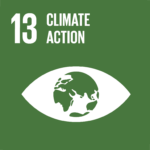By: Ranjit Devraj
Sea levels in the Pacific Ocean rising faster than global average. Indian Ocean warming already causing storms, erratic rainfall and droughts. Scientists call for urgent global action including reduced fossil fuel burning.
[NEW DELHI] Immediate action is needed at all levels to protect communities in the Asia Pacific from sea levels that are rising significantly faster than the global average, say climate scientists ahead of the next key UN climate summit.
Sea level rise is caused by the emission of greenhouse gases from burning fossil fuels, which trap heat, causing glaciers and ice sheets to melt and water molecules to expand. It poses a serious threat to coastal communities in the region.
RELEVANT SUSTAINABLE GOALS



Sea surface temperatures in the southwest Pacific have risen three times faster than the global average since 1980, according to analysis by the World Meteorological Organization (WMO).
In much of the western tropical Pacific, the sea level has risen approximately 10–15 centimetres or nearly twice the global rate measured since 1993, while in the central tropical Pacific, sea level has risen approximately 5–10 centimetres, according to the WMO report.
During that period, marine heatwaves have roughly doubled in frequency, lasting longer and becoming more intense, the WMO report said.
Sea warming is already causing more frequent and more intense weather events such as tropical cyclones, floods and droughts, posing a major risk to coastal cities, explains Roxy Mathew Koll, climate scientist at the Indian Institute of Tropical Meteorology.
“We can no longer call the consequences of these events natural disasters as they are largely the result of human interventions at multiple levels, from global to national to local – so we have a collective responsibility here,” says Koll who led a study on Indian Ocean warming published April in Science Direct.
According to Koll, more than 90 per cent of global warming gets absorbed by the seas with roughly a quarter of that going into the Indian Ocean.
“The Indian Ocean, already the warmest large ocean, is warming up faster than the Pacific and the Atlantic Oceans – this is because the northern Indian Ocean basin is landlocked by the South Asian sub-continent,” he explains.
There are also local, inland factors that add to sea level rise, says Anand Sharma, climate scientist and a former director of the India Meteorological Department.
“Land subsidence, pollution, rivers that empty into the sea carrying sewage and nuclear power plants also contribute to sea level rise – these are in the hands of local governments.”
COP29
A key focus of the UN climate COP29, which starts in Baku in November, will be climate finance, to help countries reduce their emissions and protect the most vulnerable from the impacts of climate change.
Sharma believes that countries in the Asia Pacific should begin local action immediately to protect themselves and their populations rather than wait for COP29 to initiate efforts at the global level.
“Think and act local while waiting for global action might be the best policy,” he says.
The Indo-Pacific region – which includes the tropical waters of the Indian Ocean, the central and western Pacific Ocean, and the seas linked to the two vast basins – is already marked by natural disasters, resource scarcity and internal conflict.
The Indian Ocean too is warming fast. Koll and fellow researchers calculated that surface warming will likely increase by 1.4–3 degrees Celsius between 2020 and 2100, unless greenhouse gas emissions are reduced immediately.
According to the India’s Ministry of Earth Sciences the sea level of the Indian Ocean rose at an average rate of 3.3 millimetres per year between 1993 and 2015.
The World Bank predicts that by 2050, around 49 million people in the Pacific and East Asia will be forced to leave their homes due to climate change. The Pacific Islands, particularly the low-lying ones, are among the first regions to be impacted.
The projected changes in surface temperatures in the Indo-Pacific region may lead to more extreme weather events, such as cyclones and cloudbursts.
“Already we are seeing more coastal flooding, shoreline retreat saltwater contamination of freshwater supplies and displacement of communities,” said WMO Secretary-General Celeste Saulo.
At the release of the WMO report in August, UN Secretary-General Antonio Guterres said that while some sea-level rise is inevitable, the scale, pace and impact will “depend on our decisions” in cutting greenhouse gas emissions and improving climate adaptation.
“We need a surge in funds to deal with the surging seas,” he said.
“At COP29, countries must agree to boost innovative financing and a strong new finance goal.”
This article was originally published on SciDev.Net. Read the original article.
Lead image Adapted from WMO State of the Climate in the South-West Pacific in 2023 (Corals in particular are extremely sensitive to changes in temperature. Climate scientists say sea levels in the Pacific Ocean are warming faster than global average).



